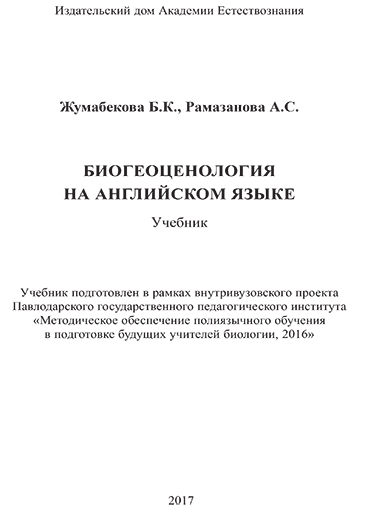
Научная электронная библиотека
Монографии, изданные в издательстве Российской Академии Естествознания
Chapter 8. ECOLOGICAL RELATIONSHIPS
|
Essential targets: By the end of this chapter you should be able to answer the following questions: How do organisms interact with each other in biocenosis? What advantages and disadvantages do the relationships of organisms have in biocenosis? |
Read the given text. Fill in the chart / Мәтінді оқып шығыңдар. Сызбаны толтырыңдар / Прочитайте текст. Заполните схему.
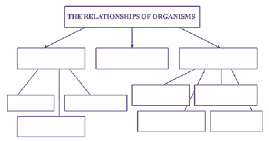
Ecological communities consist of interacting or potentially interacting species in the same environment. The direct interactions between species are divided into five categories. Sometimes these complex interactions and the flow of energy through the system are diagrammed in food webs, which display the movement of energy from lower to higher trophic, or feeding, levels [1].
Predation
Predation describes one species, the predator, feeding on and typically killing another organism, the prey species. Predators use various methods to capture prey, just as their prey use various methods to avoid capture. Herbivore is comparable to predation, but herbivores feed on plants rather than animals. Herbivores do not necessarily kill a plant they feed on but sometimes put pressure on the plant species (Pic.3) [1].
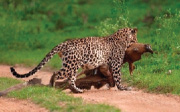
Picture 3. Male leopard preying on Indian bison [2]
Competition
Competition describes multiple organisms fighting for the same resources. Interspecies competition is competition between different species; intraspecies competition is competition between organisms of the same species. The competition may or may not involve active interference. Squirrels and deer may both eat acorns in a site but do not directly fight for the acorns and instead make fewer acorns available for the other. Alternatively, competition may involve direct interference, like when a plant secretes chemicals from its roots to keep other plants from growing around it. The more similar two species in a community are, the more competitive they are with each other, fighting for limited resources (Pic.4-5) [1].


Picture 4. Intraspecific competition [3] Picture 5. Interspecific competition [4]
Parasitism
Parasitism is when one species benefits from a second species that is disadvantaged, but generally not killed. A tick feeding on a host is a good example of parasitism. The host is not directly killed by the tick, which benefits from the relationship while the host is adversely affected, as it feeds on the host’s blood (Pic.6) [1].

Picture 6. Parasitism. The larva breaking through the ladybug’s abdomen [5]
Mutualism
Mutualism is an interaction characterized by mutual benefit, so both species benefit from the relationship (Pic.7).

Picture 7. Mutualism [6]
A flowering plant producing nectar to attract an animal, such as a bee, is one example. The bee benefits by feeding on the nectar, while the plant benefits because the bee goes on to disperse the plant’s pollen. Mutualism can also be thought of as “mutual exploitation” [1].
Commensalism
Commensalism describes a relationship in which one species benefits but the other is unaffected. Examples of commensalism include a bird nesting in a tree. The bird is using the tree for shelter but the tree is unaffected. A second example is a certain intestinal bacteria species that lives in an animal’s gut, which provides food and shelter for the bacteria, but the bacteria does not negatively or positively affect the host organism. Note that there are many types of intestinal bacteria, and while some – commensalists – have no effect on the host, others may benefit or harm the host (Pic.8) [1].
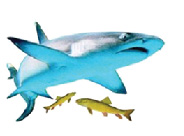
Picture 8. Commensalism between Sucker fish and Shark [7]
Symbiosis
Symbiosis means literally living together. Coined in 1876 by De Bary, to describe two species of organisms that lived together, with no implication regarding the length or outcome of the association. So symbiosis as originally conceived covered a range of intimate interactions between organisms-the most common ones being mutualism, commensalism and parasitism. So symbiosis was an overarching term, there has been a move to restrict symbiosis to a particular sort of association, where both partners are seen to benefit, but most modern literature has now returned to using symbiosis as an umbrella term for organisms that live together (Pic.9) [1].
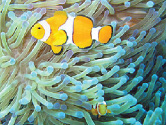
Picture 9. Symbiosis [8]
Glossary of essential terms / Негізгі терминдер глоссарийі / Глоссарий основных терминов
|
№ |
English term |
Kazakh equivalent |
Russian equivalent |
|
1 |
acorn |
емен жаңғағы |
жёлудь |
|
2 |
adversely |
қолайсыз, теріс |
неблагоприятно, отрицательно |
|
3 |
bee |
ара |
пчела |
|
4 |
capture |
басып алу |
захват |
|
5 |
competition |
бәсеке |
конкуренция |
|
6 |
deer |
бұғы |
олень |
|
7 |
directly |
тікелей |
напрямую |
|
8 |
fighting |
күрес |
борьба |
|
9 |
predation |
жыртқыштық |
хищничество |
|
10 |
shelter |
жасыру |
укрытие |
|
11 |
the impact |
ықпал ету |
воздействие |
|
12 |
to attract |
тарту |
привлекать |
|
13 |
to extract |
шығару |
извлекать |
|
14 |
to produce |
шығару |
производить |
|
15 |
to restrict |
шектеу |
ограничивать |
|
Questions: What kinds of relationships are there in biocenosis? What is the distinction between interspecific competition and intraspecific competition? What examples of parasitism are there in biocenosis? What examples of mutualism are there in biocenosis? What examples of commensalism are there in biocenosis? What examples of symbiosis are there in biocenosis? |
|
Key phrases and sentences / Түйінді сөздер мен сөйлемдер / Ключевые фразы и предложения 1. There are following relationships of organisms in biocenosis: … / Ағзалар арасындағы байланыс түрлері: … / Выделяют следующие взаимоотношения в биоценозе: … 2. Predation is … where a predator kills and feeds on its prey. / Жыртқыштық – жыртқыш құрбанын өлтіріп, қоректенетін ... / Хищничество – это …, при котором хищник убивает и питается жертвой. 3. Parasitism is … where a parasite benefits at the expense of the host/ Паразитизм – паразиттер өз иесінен пайда көретін … / Паразитизм – это …, при котором паразит получает выгоду от хозяина. 4. Symbiosis is … / Симбиоз дегеніміз … / Симбиоз – это … |
I. Match the types of relationships of organisms. Add your samples of relationships in biocenosis / Ағзалардың өзара қарым-қатынас түрлерін сәйкестендіріңдер. Биоценоздағы қарым-қатынастарға өз мысалдарыңды қосыңдар / Соотнесите типы взаимоотношений организмов. Добавьте свои примеры взаимоотношений в биоценозе.
1. Aphid – Ant A. Predation
2. Wolf – Rabbit B. Symbiosis
3. Human – Helminths C. Parasitism
4. Alder – Polypore
5. Birch – Brown cap boletus
II. Find English and Kazakh equivalents to the following word combinations / Келесі сөз тіркестерінің ағылшын және қазақша баламаларын табыңдар / Найдите английский и казахский эквиваленты для следующих словосочетаний.
|
№ |
Russian term |
English equivalent |
Kazakh equivalent |
|
1 |
экологическое сообщество |
||
|
2 |
прямое воздействие |
||
|
3 |
добыча |
||
|
4 |
захват |
||
|
5 |
бороться |
||
|
6 |
выгода |
||
|
7 |
производить |
||
|
8 |
привлекать |
||
|
9 |
взаимная выгода |
||
|
10 |
рассматривать |
III. Read the scenario and answer the questions that follow, justifying your answers. Include a minimum of two consequences for each question / Жағдаятты оқып шығыңдар және өз жауаптарыңды негіздей отыра сұрақтарға жауап беріңдер. Әрбір сұраққа кем дегенде екі жауап құрыңдар / Прочитайте ситуацию и ответьте на вопросы, обосновывая свои ответы. Составьте как минимум по два ответа для каждого вопроса.
On Isle Wilderness, farmers raised chickens and vegetable crops. There was a stable population of wild rabbits and foxes on the island. Over a period of time, the farmers noticed that their chickens were disappearing. After looking into the problem, the farmers blamed the foxes for the loss of their chickens and decided to trap and move most of the foxes [9].
1. What will happen to the wild rabbit population?
2. What will happen to the vegetable crops?
3. What will happen to the population of the farmers’ chickens?
4. How could stable populations be reestablished on the island?
IV. Fill in the table. Answer the questions below [10] / Кестені толтырыңдар. Төменде келтірілген сұрақтарға жауап беріңдер / Заполните таблицу. Ответьте на приведенные ниже вопросы.
Ecological relationships
|
Organism 1 |
Organism 2 |
Description |
Relationship |
|
Dog |
Flea |
The flea feeds on blood from the dog. There is no benefit to the dog and the itching and bites may lead to infection. |
|
|
Fungus |
Algae |
The photosynthetic algae provide food for the fungus, which in turn provides a suitable living environment for the algae. |
|
|
Termite |
Cellulose digesting bacteria |
The bacteria in the gut of the termite breakdown and feed on some of the cellulose taken in by the termite. The termite would be unable to digest cellulose without these bacteria and they gain an additional source of nutrition from the surplus digested cellulose. |
|
|
Shark |
Remora |
The Remora fish swim alongside the shark and take scraps of food that the shark drops during feeding. The shark does not eat the Remora and appears unaffected by its presence. |
|
|
Cattle |
Cattle egret |
The cattle egret follows herds of cattle and eats the insects that the cattle stir up as they move through the grassland. The cattle appear to be unaffected by the egrets. |
|
|
Human |
Tapeworm |
The tapeworm lives in the small intestines where it feeds and grows, robbing the human of essential nutrients. |
1. Refer to the dog and flea relationship in Table.
a. In the dog and flea relationship, is there a benefit for one of the organisms or for both?
b. Is either the dog or the flea harmed by this relationship?
c. Which other relationship in Table is similar to that between the dog and flea?
2. Refer to the fungus and algae relationship in Table.
a. Is there a benefit for one of the organisms or for both?
b. Is either the fungus or the algae harmed by this relationship?
c. Which other relationship in Table is similar to that between the fungus and the algae?
3. Refer to the shark and remora relationship in Table.
a. In the shark and remora relationship, is there a benefi t for one of the organisms or for both?
b. Is either the shark or the remora harmed by this relationship?
c. Which other relationship in Table is similar to that between the shark and the remora?
V. Fill in the table / Кестені толтырыңдар / Заполните таблицу.
Ecological communities
|
Ecological communities |
Advantages |
Disadvantages |
|
Predation |
||
|
Competition |
||
|
Parasitism |
||
|
Mutualism |
||
|
Commensalism |
||
|
Symbiosis |
|
SUMMARY An Ecological relationship is the relationship between organisms in a biocenosis. All organisms in a biocenosis are connected. Each interaction depends on the one before it. Each population interacts with one another in a complex web of relations. Ecological relationships help better describe how they are connected. |
|
There are oppositional and symbiotic relationships. The oppositional relationships are predation and competition. The symbiotic relationships are mutualism, commensalism, amensalism, and parasitism. |
 Topics for essay:
Topics for essay:
1. Classification of predators.
2. The relationship between the predator and its prey.
3. Intraspecific competition.
4. Interspecific competition.
5. Antagonism.
6. Protocooperation as a form of symbiosis.
7. Symbiosis and evolution.
8. Neutralism as a form of relationship between organisms.
9. The role of relationships between organisms in the nature.
10. Classification of commensalisms.
 References:
References:
1. Synonym // http://classroom.synonym.com/five-types-ecological-relationships-7786.html
2. The encyclopedia of Earth // http://www.eoearth.org/view/article/155341/
3. Экология // http://ekol-ush.narod.ru/03.htm
4. Science Daily // http://www.sciencedaily.com/releases/2011/07/11071808 5229.htm
5. JoshuaTreeV // https://joshuatreev.wordpress.com/ecology/mutualism/
6. Tutor Vista // http://www.tutorvista.com/content/biology/biology-iv/biotic-community/positive-interactions.php
7. https://es.wikipedia.org/wiki/Simbiosis
9. http://ebookinga.com/pdf/relationships-of-organisms-dearborn-public- 194856757.html
10. http://ebookinga.com/pdf/23-ecological-relationships-s-287603653.html
